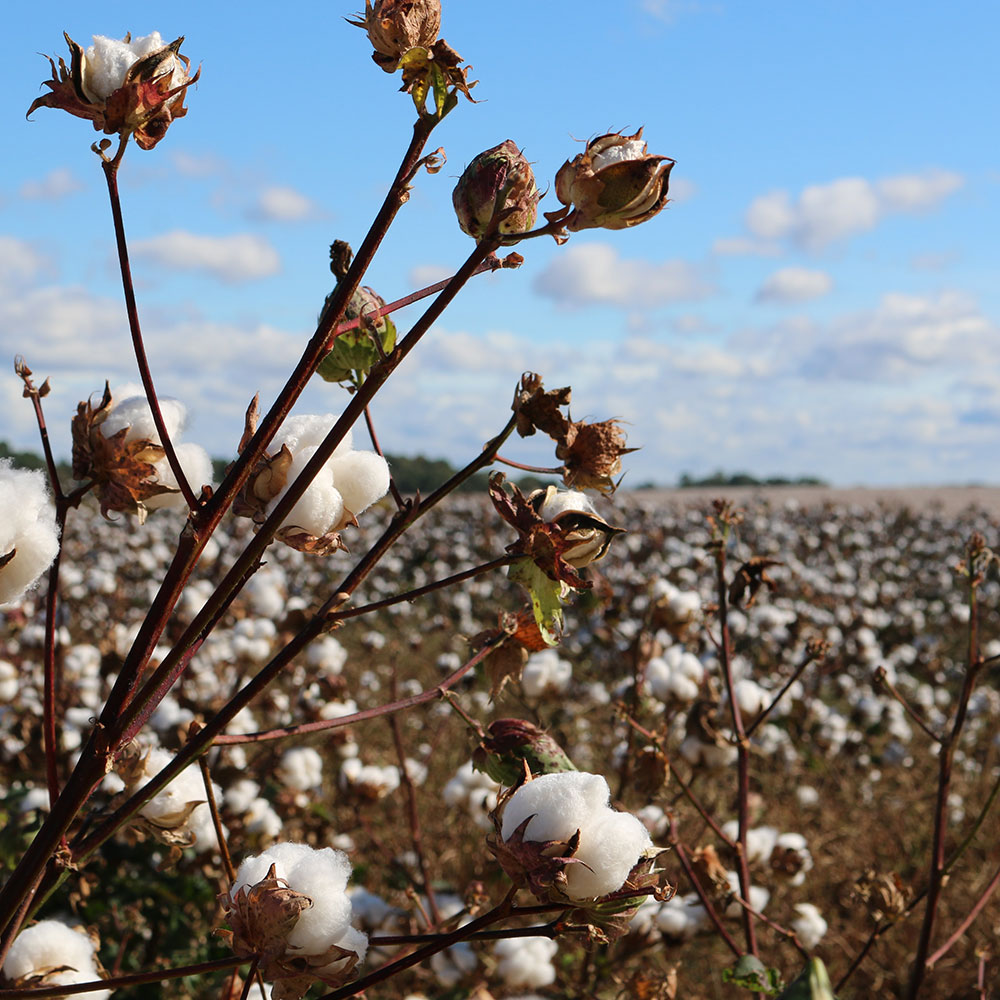
The first-ever global analysis of climate risks to cotton production reveals runaway climate change could expose half of all global cotton growing regions to high risks from temperature increases, changes to rainfall patterns, and extreme weather events by 2040.
Titled “Adapting to climate change – physical risk assessment for global cotton production”, the analysis was commissioned by the Cotton 2040 initiative, which is facilitated by international sustainability non-profit Forum for the Future, and supported by Laudes Foundation. The analysis was conducted by Cotton 2040 partner and climate-risk specialists Acclimatise, part of Willis Tower Watson’s Climate and Resilience Hub.
Under a worst-case climate scenario, the analysis highlights that all global cotton growing regions will see increased risk from at least one climate hazard by 2040. While this increase ranges from very low to very high risk, half of the world’s cotton growing regions will face drastic changes with high or very high-risk exposure to at least one climate hazard.
Other key findings include:
- All six highest cotton-producing countries – India, USA, China, Brazil, Pakistan and Turkey – face increased climate risk; particularly from wildfire, drought and extreme rainfall.
- The highest climate risk overall is projected for two regions of the world; north-western Africa, including northern Sudan and Egypt. Also, western and southern Asia.
- Some regions will face high or very high exposure to up to seven climate hazards.
- Cotton exposure to heat stress (temperatures above 40°C) will be a growing risk across 75% of cotton growing regions. The risk is high or very high across 5% of regions.
- 40% of global cotton growing regions are forecast to experience a decrease in the growing season. This is due to temperatures increasing beyond the optimum range for cotton growing.
- Water scarcity and extremes in rainfall range from insufficient in some regions to extreme and more intense in others. This will present increased risk for the world’s most productive cotton growing regions. It will add extra pressure to a fibre already under scrutiny for its water footprint, affecting yields and potentially threatening to cause conflict and societal unrest.
- Exposure to increased risk from drought will impact 50% of cotton.
- 20% of the world’s cotton growing regions will be exposed to increased risk from fluvial flooding by 2040. Plus, 30% of cotton growing regions will face increased risk from landslides.
- All cotton growing regions will be exposed to increased risk from wildfires.
- 60% of cotton will be exposed to increased risk from damaging wind speeds. Up to 10% will also be exposed to increased risk from storms.
Commenting is Sally Uren, chief executive, Forum for the Future.
“This analysis is a wake-up call for the cotton industry, on which much of the apparel sector is currently hugely reliant. To build resilience for a highly disrupted and uncertain future, the widespread shifts to sustainable forms of cotton production must be bolstered by ambitious and aligned action to reduce carbon emissions, while also preparing the industry to operate in a very different world.”
Cotton has a market worth of about $12 bn. It makes up around 31% of all raw material used in the global textile market; a yearly economic impact of over $600 billion. It also supports the livelihoods of around 350 million, who cultivate or process cotton. Approximately 90% of farmers grow cotton on less than two hectares of land and are located in developing countries; mainly in Central and West Asia, Southeast Asia and Africa.
The global analysis is complemented by an in-depth analysis of physical climate risks and socio-economic vulnerabilities to the cotton value chain in India. This highlights that climate impacts extend beyond direct impacts to cotton production; affecting the entire value chain, including workers involved in harvesting and processing, as well as supply chains.
Also commenting is Allan Williams, general manager for R&D Investment at the Australian Cotton Research & Development Corporation.
“Cotton growers around the globe are already feeling the impacts of climate change, with direct effects on cotton production and knock-on effects for the wider cotton value chain. For many, the future looks uncertain. Creating a cotton sector in which people and planet can thrive will require collective, responsible action to drive climate adaptation. But it must happen in a way that ensures that cotton producers and their communities don’t get left behind.”












